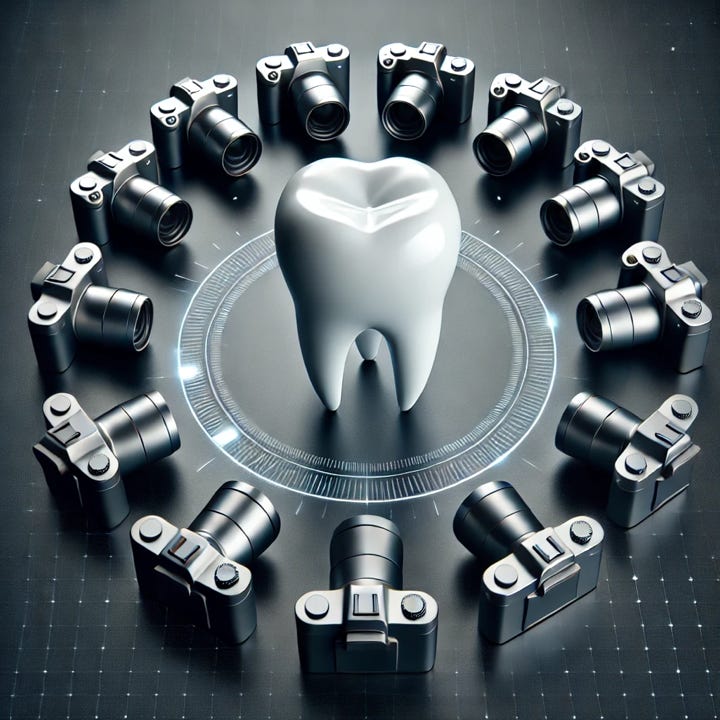Orthodontics meets Photogrammetry: Are we there yet?
Photogrammetry is a technology that aims to create 3D models from 2D photographs. By capturing images from multiple angles, it uses algorithms to calculate depth and dimensions.
What is the potential of photogrammetry for dentistry and orthodontics?
The creation of 3D jaw models using Photogrammetry can generate detailed digital impressions, eliminating the need for physical molds. The process is non-invasive and more comfortable than traditional methods. Besides, digital files are easier to share and store.
Challenges
Despite its promise, photogrammetry faces challenges to be fully applied in the fields of dentistry and orthodontics. Firstly, capturing accurate photographs of teeth is challenging due to several factors. Teeth have a smooth surface that reflects light, making it hard to avoid glare or distortion. Additionally, teeth are often wet, which further complicates image clarity. The soft tissues, such as the tongue or cheeks, can move unpredictably, obstructing the view. Capturing posterior teeth, especially the last molars, is particularly difficult because of their position and limited accessibility. These challenges make it hard to consistently obtain sharp, detailed, and properly angled photos required for precise photogrammetry. Secondly, potentially due to the mentioned challenges, available software does not seem to be able to create 3D models with sufficient quality. Besides, proper use of photogrammetry requires the relevant expertise.
While photogrammetry is not yet universally adopted and many challenges remain, it offers high potential to enhance diagnostics and appliance design. With continued development, we are excited to see when and how photogrammetry will be included in orthodontic and dental workflows.

